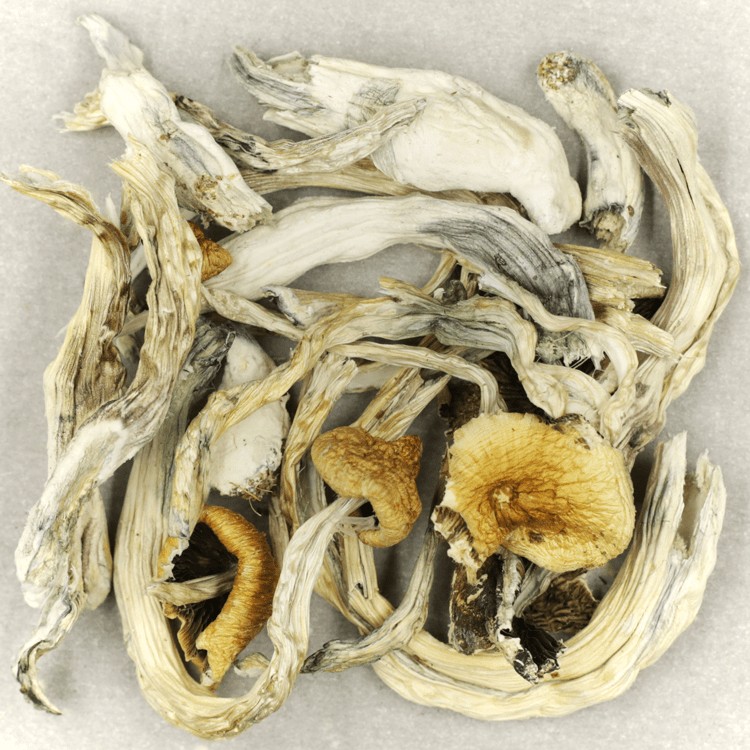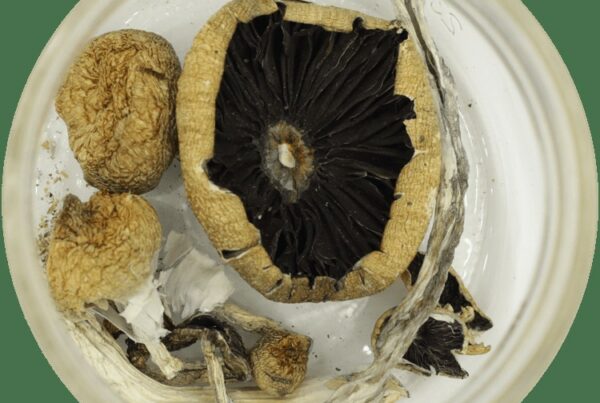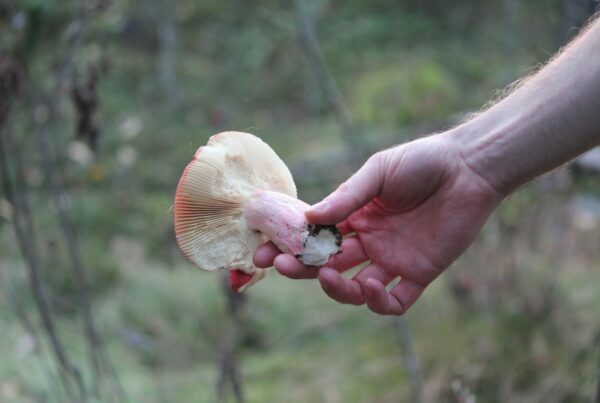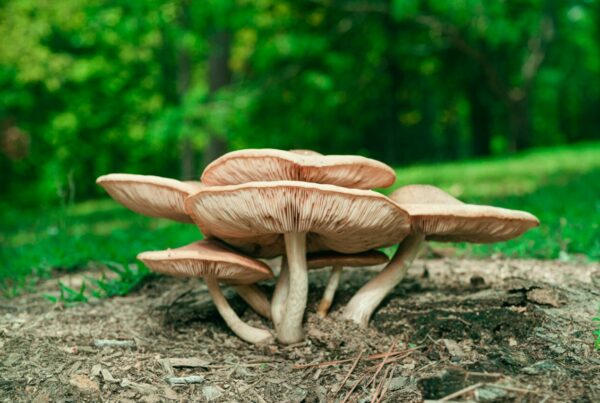The Treasure Coast Mushroom is a well-liked variety of magic mushrooms, renowned for its capacity to stimulate creative thinking and promote innovative thought patterns.
Writers often encounter a creative block, which appears as a difficulty in conceiving or executing new ideas.
At times, this creative block stems from psychological aspects such as fear of criticism, pursuit of perfection, or external stress. Although various methods exist to conquer these issues, mushrooms can offer some a faster and more profound pathway to innovative thinking.

Key Highlights:
- Treasure Coast mushrooms enhance creativity by promoting divergent thinking.
- The significant psilocybin content momentarily disrupts the brain’s default mode network, boosting spontaneous brainstorming and self-reflection.
- Psilocybin can augment creativity by enhancing the ability to develop new ideas, even a week after consumption.
Exploring Treasure Coast Mushrooms:
Scientifically known as Psilocybe cubensis, these mushrooms originated in Florida’s Treasure Coast region, from where they derive their name. They are recognized for their fast growth rate.
- They feature a distinct caramel to golden brown cap that can expand up to 5 centimetres in diameter.
- The cap has undulating edges and bears a resemblance to a small sombrero.
- Underneath the cap, there exists a dense layer of gills that can vary in color from light yellow to a deeper brown hue.
- Upon reaching maturity, it leaves behind a purple-black spore print.
- The stem is strong and firm, ranging from 5 to 15 centimetres in height. It often turns blue when touched, which is not merely a visual aspect; it’s a chemical reaction signaling the existence of psilocin, a potent psychoactive compound that affects the brain.
Note: Variants with lesser pigmentation, known as leucistic strains, can be formed upon discovery and these resemble the original strain strikingly.
Potency and Effects
While it might not rival the potency of strains like Penis Envy, it still offers a distinctive psychedelic experience. Users have reported typical psilocybin effects such as mood enhancement, heightened perception, and profound insights.
Brief Historical Context in Cultural Environments
Historically, the usage of mushrooms can be traced back to ancient civilisations, with records of their application in spiritual and medicinal rituals in regions ranging from Mesoamerica to modern-day Canada.
Indigenous communities used these mystical fungi in ceremonies to foster deep spiritual connections, harnessing their visionary properties for healing and community bonding.
The Scientific Basis for Psilocybin’s Effect on Creativity
A recent article in the Journal of Transnational Psychiatry used ultrahigh-field multimodal brain imaging to investigate these effects in real-time. The study discovered that psilocybin increased the connectivity within and among different brain networks, correlating with a surge in “spontaneous” creativity.
Alterations in Perception and Cognitive Skills
After ingestion, psilocybin reaches its peak concentration in the bloodstream (15.61 ng/mL) roughly 80 minutes later, leading to reported alterations in sensory perception and cognitive function.
- Colors appear brighter
- Objects seem to throb or morph
- Changes in spatial awareness can occur
There was a noted increase in glutamate concentrations within the medial prefrontal cortex, an area linked to high-level thinking and decision-making abilities. On the other hand, glutamate levels decreased in the hippocampus, an area connected to memory.
Research Outcomes
Does psilocybin enhance creativity, or is it just theories? A study from the Journal of Transnational Psychiatry explored this question by examining “spontaneous” and “deliberate”
Spontaneous ingenuity refers to sudden, raw ideas that abruptly emerge in one’s mind, while deliberate ingenuity involves focused problem-solving and task-oriented cognitive processes. Studies have noticed that spontaneous thought patterns are amplified, while deliberate ones are temporarily suppressed.
- Exercises such as the Picture Concept Task (PCT) and the Alternative Uses Task (AUT) were used to evaluate the creativity of participants with very high reliability scores of 0.95 and 0.91, respectively.
- After consuming the substance, participants reported an increase in insightful feelings, suggesting a heightened connection to innovative ideas.
- The task-focused thoughts of the participants decreased, likely due to the emergence of less restricted brain connections overpowering the linear, structured problem-solving approach.
- Seven days after intake, participants showed an augmented generation of unique ideas, implying that the brain’s reconfiguration may have a prolonged effect, boosting creativity even after the period of consumption.
Divergent Thinking and Problem Solving
Divergent thinking, the capacity to develop multiple solutions for a single problem, is a fundamental element of creativity. The compound helps the brain to consider perspectives that might usually be rejected as irrational or improbable by breaking down conventional thought barriers.
Psychedelic substances with sufficient milligrams to induce hallucinations target serotonin 5-HT2A receptors in the brain, interrupting normal thought patterns and fostering cognitive flexibility and divergent thinking. This mechanism could potentially unlock pathways to creativity.
Tips for Writers Considering Treasure Coast Mushrooms
Feeling like you’re stuck in a creative deadlock? You might want to think about the potential creativity enhancement that mushrooms could provide. For novices, it’s recommended to start with smaller doses to safely explore the creativity-boosting effects of this fascinating substance.
Dosage Recommendations for Creative Pursuits
| Microdose (0.1 – 0.3 grams) | Although this won’t trigger visual effects, it can enhance focus, mood, and creativity without disrupting your daily activities. |
| Low Dose (0.5 – 1 gram) | This dosage may enhance and minor distortions to sensory perception and mood. |
| Moderate Dose (1 – 2 grams) | A dosage of this size will produce more noticeable effects, such as visual distortions, an increased sense of interconnectedness, and heightened emotional responses. |
The Importance of “Set” and “Setting”
- Set: Reflect on your goals before you start. Are you looking to generate fresh ideas? Explore your character’s mindset. Approach the session with an open-minded attitude, prepared for potential psychological discovery.
- Setting: Choose a comfortable, familiar place. Think about a tranquil room, perhaps decorated with mood-enhancing items like soft lighting, calming instrumental music, and a notepad at hand. If possible, let a reliable friend know about your session or ask them to be there as a sober, supportive “trip-sitter” if needed.
Techniques to Try While Under the Influence
Freeform Thought Writing
Psilocybin often relaxes traditional filters, promoting a stream of consciousness. This involves writing down whatever thoughts come to mind without self-editing, judging, or worrying about its logical coherence.
Continuous Association
An interesting exercise is to write down words as they come up, even if they seem unrelated. This may connect unrelated ideas, so jot down any words that come up, follow the thought trail wherever it goes, and see if you discover new themes or patterns for your piece.
Dialogue with Characters
If you’re writing fiction, consider having a direct conversation with your characters. This can blur the line between the creator and the creation, allowing you to dive into diverse perspectives. Ask questions like, “What do you want to do next?” or “What frightens you?” Record their “responses” as they come to you.
Ending Your Visionary Journey
As a member of the Psilocybe cubensis species, Treasure Coast has properties that foster the creative process, encouraging deeper introspection, sensory perception, and openness.
For authors, this isn’t
It’s not just about fleeting inspiration; it’s about harnessing a tool that can help conquer barriers to imagination, enhance sensory details, and promote unique modes of expression. Remember, psilocybin, procured from a shroom online, acts as an enabler, not a substitute for talent or hard work.
Frequently Asked Questions
How should one reflect on and incorporate the psilocybin experience?
After the session, it’s crucial for writers to review their notes or recorded thoughts and pinpoint any recurring themes, symbols, or emotions that connect with their work. Keeping a “trip journal” and summarizing discovered concepts or emotional shifts can assist them in deciphering their experience.
How long do the creative effects of Treasure Coast mushrooms last?
The effects last for 4-6 hours, but the creative boost can extend for several days. Enhanced creativity, particularly in generating innovative ideas, can persist even a week after a session. This “afterglow” period, marked by increased open-mindedness and cognitive flexibility, is an ideal time to refine or develop the ideas explored during the experience.
Are there any notable writers or artists who have used psychedelics for creative inspiration?
The author Aldous Huxley experimented with mescaline and later LSD, documenting his experiences in The Doors of Perception. Counterculture writers like Allen Ginsberg and Jack Kerouac, as well as musicians such as The Beatles, are also recognized for their psychedelic use.
While they may not have specifically used Treasure Coast, their work stands as proof of the lasting bond between psychedelics and creativity in the spheres of art and literature.





